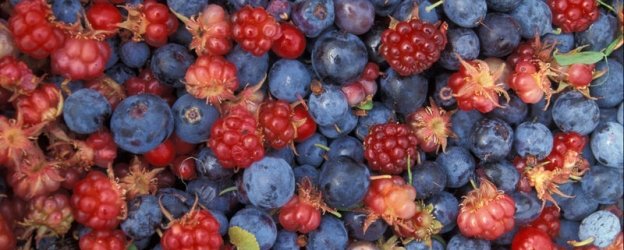Can chocolate, tea and berries guard against diabetes?
22nd January 2014

A new study has found that eating high levels of flavonoids, including anthocyanins and other compounds found in berries, tea and chocolate, could offer protection from type 2 diabetes. The research, published online in the Journal of Nutrition, also found that these food groups lower inflammation which, when chronic, is associated with diabetes, obesity, cardiovascular disease and cancer.
The study looked at the benefits of eating certain sub-groups of flavanoids. It focused on flavones (found in herbs and vegetables such as parsley, thyme, and celery) and anthocyanins (found in berries, red grapes, wine and other red or blue-coloured fruits and vegetables). It is one of the first large-scale human studies to look at how these powerful bioactive compounds might reduce the risk of diabetes. Laboratory studies have shown these types of foods might modulate blood glucose regulation – affecting the risk of type 2 diabetes – but little had been know about how habitual intakes might affect insulin resistance, blood glucose regulation and inflammation in humans.
Researchers studied almost 2,000 healthy women volunteers from TwinsUK who had completed a food questionnaire designed to estimate total dietary flavonoid intake as well as intakes from six flavonoid subclasses. Blood samples were analysed for evidence of both glucose regulation and inflammation. Insulin resistance, a hallmark of type 2 diabetes, was assessed using an equation that considered both fasting insulin and glucose levels. The findings revealed that high intakes of these dietary compounds are associated with lower insulin resistance and better blood glucose regulation.
The lead researcher commented, “_We found that those who consumed plenty of anthocyanins and flavones had lower insulin resistance. High insulin resistance is associated with Type 2 diabetes, so what we are seeing is that people who eat foods rich in these two compounds – such as berries, herbs, red grapes, wine- are less likely to develop the disease.
We also found that those who ate the most anthocyanins were least likely to suffer chronic inflammation — which is associated with many of today’s most pressing health concerns including diabetes, obesity, cardiovascular disease, and cancer.
And those who consumed the most flavone compounds had improved levels of a protein (adiponectin) which helps regulate a number of metabolic processes including glucose levels_.”
What isn’t yet known is exactly how much of these compounds are necessary to potentially reduce the risk of type 2 diabetes.
Prof Tim Spector, research collaborator and director of the TwinsUK study from King’s College London, said: “This is an exciting finding that shows that some components of foods that we consider unhealthy like chocolate or wine may contain some beneficial substances. If we can start to identify and separate these substances we can potentially improve healthy eating. There are many reasons including genetics why people prefer certain foods so we should be cautious until we test them properly in randomised trials and in people developing early diabetes.”
Want to combine raspberries and chocolate together – try our Chocolate Raspberry Smoothie.
Jennings A, Welch A A, Spector T, Macgregor A, Cassidy A. Intakes of Anthocyanins and Flavones Are Associated with Biomarkers of Insulin Resistance and Inflammation in Women. Journal of Nutrition, January 2014
Categories: Nutritional News, Metabolic Health